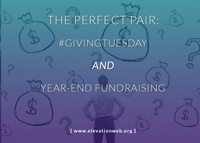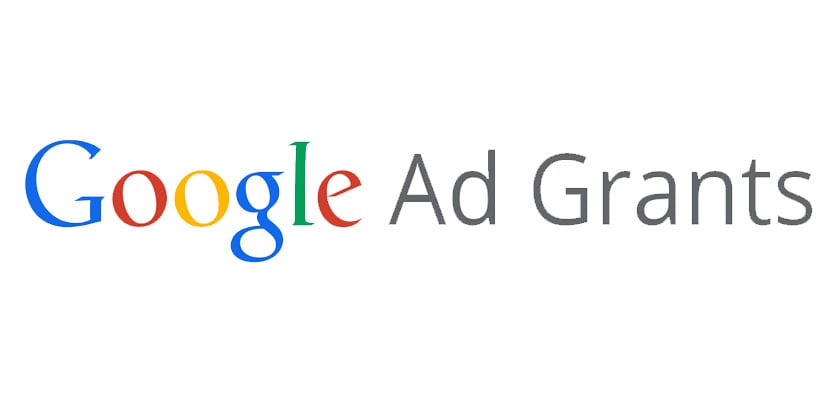Finding the right words for a successful Google Ad copy takes a village. The constant drafting, revising, publishing, and testing requires the utmost time and attention to detail, and it can be exhausting. Luckily, advertisers can optimize this process by studying and implementing the anatomy of prosperous ads. This marketing craftsmanship pivots on power words, emotional appeals, and clever copies. When these three concepts function harmoniously, your Google Ad copy will prosper.
But wait, what’s a Google Ad Grant? Read here if you’re stuck!
Power Words
Imagine you’re meeting someone for the first time and you hope to make a strong first impression: what should you do first? Of course, you got your firm handshake, your strong eye contact, and your warm greeting. That’s a great metaphor for how you should consider your ad: every one that lays eyes it is a potential donor or volunteer just waiting to be invited. Make your pitch count by using power words.
Similar to strong first impressions, it’s key to consider your audience more than yourself. In social interactions, this involves asking them questions and intently listening to their responses. After all, most people enjoy talking about themselves since it makes them feel both acknowledged and admired. This is the frame of mind you should consider when drafting the ad copy. Here are five power words that will accomplish the strongest of first-impressions in the advertising world:
1. “You”
As previously stated, it’s incredibly important to be audience focused, not self/organization focused, and “you” accomplishes just that. By establishing this psychological groundwork, users will feel more encouraged to click on the ad and find out more.
2. “Click”
I can already see the eyes rolling on this one: “really?! Click is a power word?” You’d be surprised. By integrating “click” into the ad copy, users know exactly what next step to take if they are enticed to find out more. Don’t underestimate the power of uncomplicated, direct language.
3. “Opportunity”
Who doesn’t want to pass up an opportunity? Whether it’s for justice, fun, learning, or more, “opportunity” connotes exciting beginnings. This uplifting concept drives users to click on the ad and further participate in the cause.
4. “Increase”
“Increase” in itself connotes positive change towards a target outcome. Integrating this power word brings the energy of progress and productivity to viewers.
5. “Love”
It’s the oldest trick in the book: appealing to the viewer’s love is a tactful emotional appeal that often yields clicks from anonymous constituents.
Emotional Appeal
At our core, we are emotional beings. Advertisements that involve pictures of wounded animals or impoverished children are emotionally overwhelming but quite brilliant: they pull on viewers’ heartstrings to participate in the given cause. Although advertisers can’t utilize the power of images in Google Ads, they can formulate language to function similarly.
1. Determine Your Nonprofit’s Donor/Buyer Persona
To successfully emotionally appeal to your audience, you have to be acutely aware of your customer. Who are they? What might they find funny/offensive? Tap into your viewers’ subconscious by considering their personality.
2. Commit to a Persona That Caters to the Target Audience
Do they want to be consoled? Maybe they want lighthearted humor! Or will you be their wake-up call? Either way, determine which persona your viewers want to hear.
3. Write to Your Persona
you take this persona and write an emotional appeal to accompany it. For example, if your persona pivots on shared anger/frustration with a given problem, you can write a copy that acknowledges the viewer’s disappointment with a given event and how your nonprofit offers the solution. Or let’s say your persona embodies friendly humor: you can draft an ad that is more jovial. By knowing your audience, creating a persona, and writing through the persona’s lens, your ad will be more memorable and bring more converts.
Clever Copy
While clarity is undoubtedly important in advertising, cleverness is right up there with it. Let me put it this way: how often do you discuss clever ads with your friends? Quite often, I imagine! I confess I watch the Superbowl exclusively for the witty ads (usually Doritos takes home the trophy!). And how often do you discuss clear ads with your friends? Not so much. They’re just not as memorable, nor are they as alluring. Clever ads, on the other hand, can garner more laughs and likely more responses. It’s important to remain relevant and sensitive in the process, though: you don’t want to overwhelm/offend your audience. And finally, clever ads won’t necessarily lead to more converts, but it may certainly increase your memorability and influence. In short, cleverness is not the bread and butter of a strong ad, but it is important to consider.
Now for the Basic Ingredients
Each ad uses the full allotment of headlines and descriptions, including utilizing as much of the character limit as possible. Using more of the allotted space makes your ads appear larger, which can increase the click-through rate and the number of visitors ultimately arriving on your website as a result.
Ad extensions that you leverage well
are a technical requirement, but for a campaign to be successful, they also need . There are a number of “extensions” that can be added to enhance your ads. In particular, we recommend at a minimum that you use:
Callout extensions, which allow you to add short, punchy, “bullet point” style phrases that sometimes appear beneath your ad.
Sitelink extensions, which appends links to other pages on your website that may also be related to your ad.
Call extensions. In situations where you are trying to drive inbound phone calls as well, this extension allows you to display a phone number so people can reach you. On mobile devices, users simply need to tap this number to place a call to your organization.
Final Thoughts
Like every tasty recipe, there is flavoring on top of the basic ingredients, and hungry eaters. The anatomy of a successful Google Ad is similar. The steps involve drafting, revising, publishing, and testing. The flavor comes from power words, emotional appeals, and clever copy, while the recipe . And the hungry eaters are out there waiting to be wowed. By integrating these techniques into your Google Ad copy, you will reach a wide and interested audience.
Need some extra help? Learn more about how Elevation can maintain your Google Ad grant.



